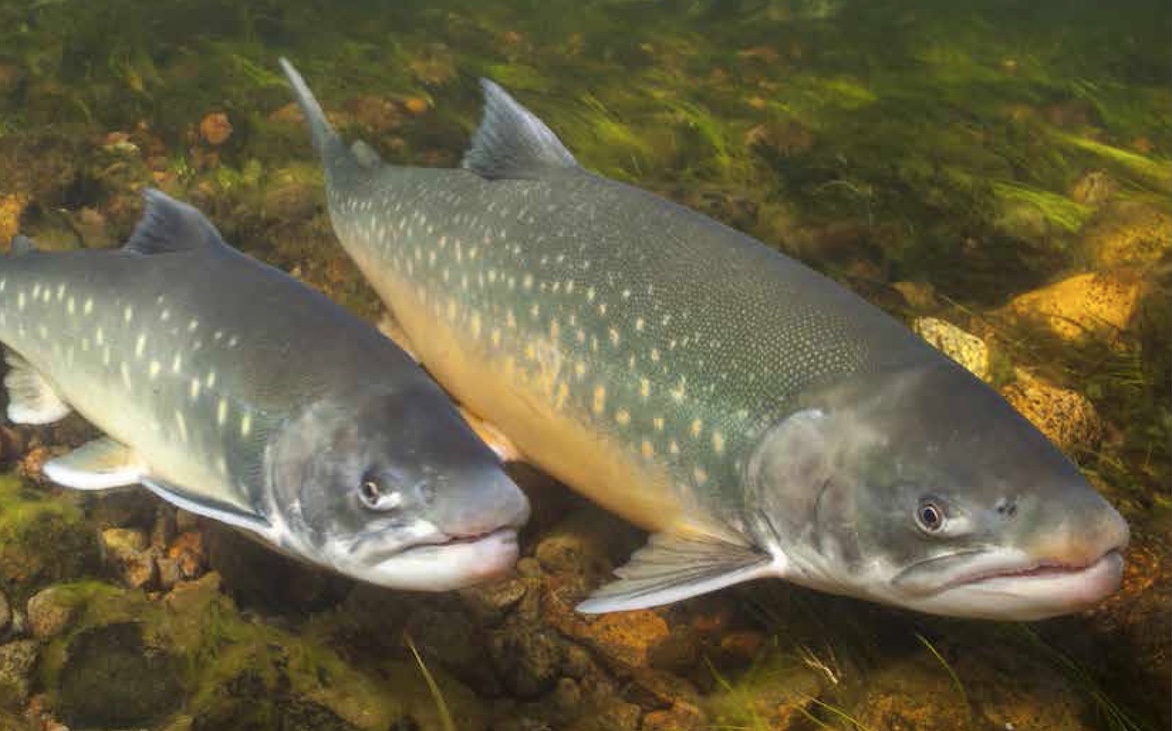Arctic freshwaters face big changes, possible species loss, says report
Climate change could cause a reduction in cold-tolerant species.

Globally, the range of species across the Arctic is heading toward a period of up-and down changes that could see many species of fish and other freshwater life—even algae—replaced by newcomers venturing in from southern waters.
That is the warning from a new report produced by the Arctic Council’s Conservation of Arctic Flora and Fauna program.
While it’s not a policy document, “The State of the Arctic Freshwater Biodiversity Report,” released on May 7, at the Arctic Council ministerial in Rovaniemi, Finland, urges decision makers to prepare effectively for an uncertain future and follows its similar report on Arctic marine biodiversity from 2017.
The situation could start out OK, the new report suggests.
[High Arctic Char are in a losing battle with climate change]
That’s because some scenarios of change in Arctic lakes, rivers and wetlands actually predict a net increase in species with warming temperatures.
This assumes southern species will be able to colonize northern regions.
But there’s a kicker here: as water quality and habitat conditions shift to more closely resemble southern latitudes, this shift is expected to come with a reduction in the habitat range of cold-tolerant species usually found in the Arctic, the report said.
In other words, although an overall increase is predicted in the number of species, there will be “a net loss of unique Arctic-specific biodiversity,” the report said.
[Across the Arctic, lake ice is melting out earlier in the spring]
Some changes will take decades to reveal their impacts, while others may induce “sudden biological shifts with strong repercussions.”
The stressors include permafrost thaw, long-range transboundary air pollutants, pollution originating from industrial development and urbanization, fisheries over-harvesting, dams and other forms of development that, the report warns, can lead to “substantial habitat fragmentation and destruction.”
The report, among other actions, recommends engaging local communities in monitoring efforts through “citizen science” efforts.
The Arctic Council report comes as a recently released United Nations report said human actions threaten more species with global extinction now than ever before.
[Iceland reaps riches from warming oceans as fish swim north]
An average of about 25 percent of species in assessed animal and plant groups are threatened, suggesting that about one million species already face extinction, many within decades, unless action is taken, the U.N. report said.
The U.N. says indigenous peoples can help stave off the loss of biodiversity globally: “Governance, including customary institutions and management systems, and co-management regimes involving indigenous peoples and local communities, can be an effective way to safeguard nature and its contributions to people, incorporating locally attuned management systems and indigenous and local knowledge.”